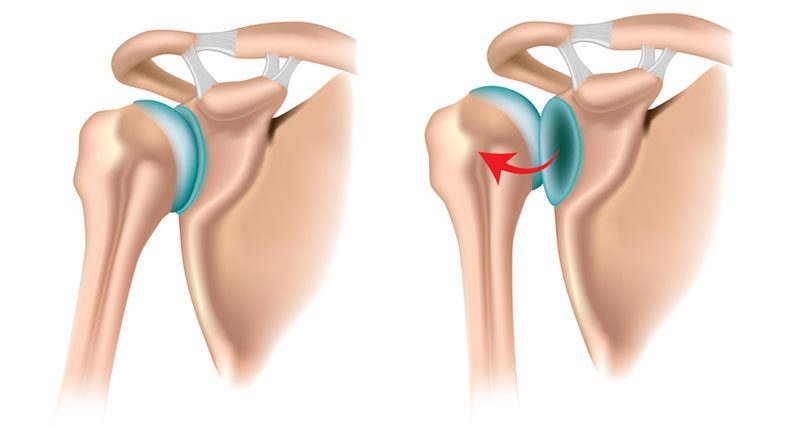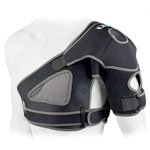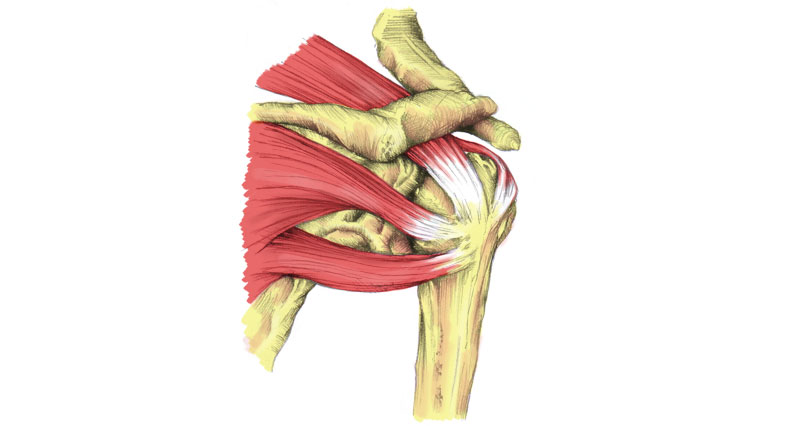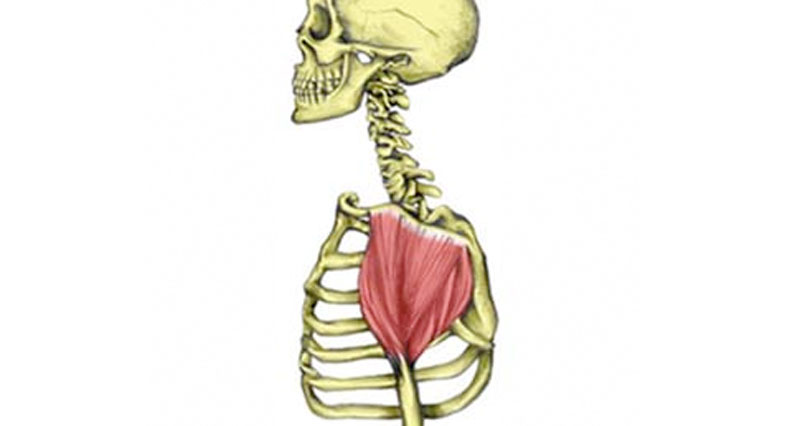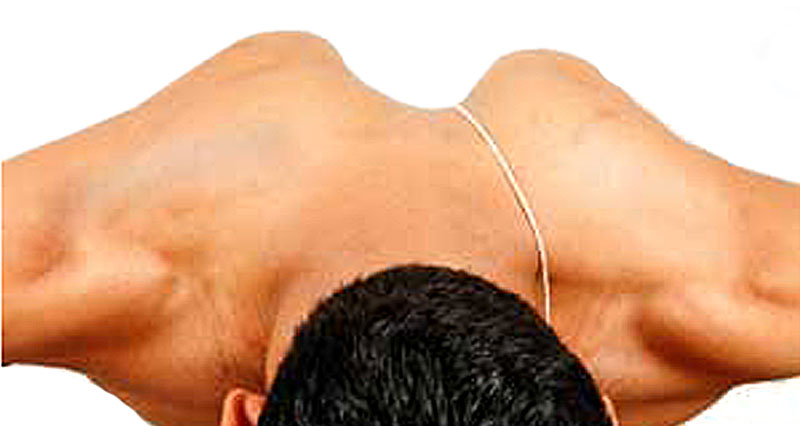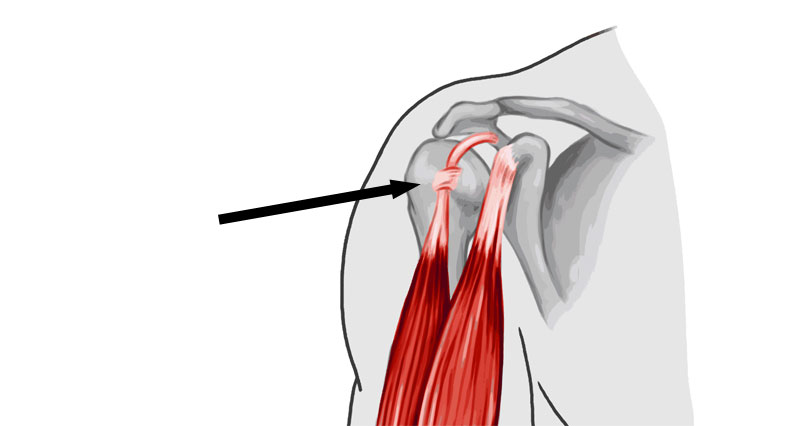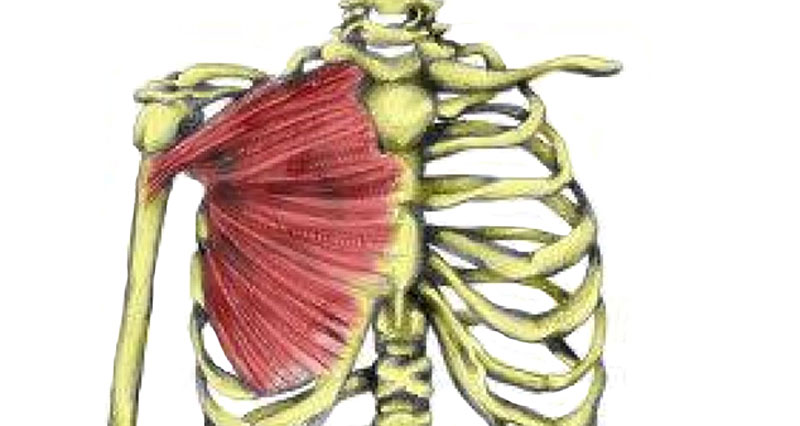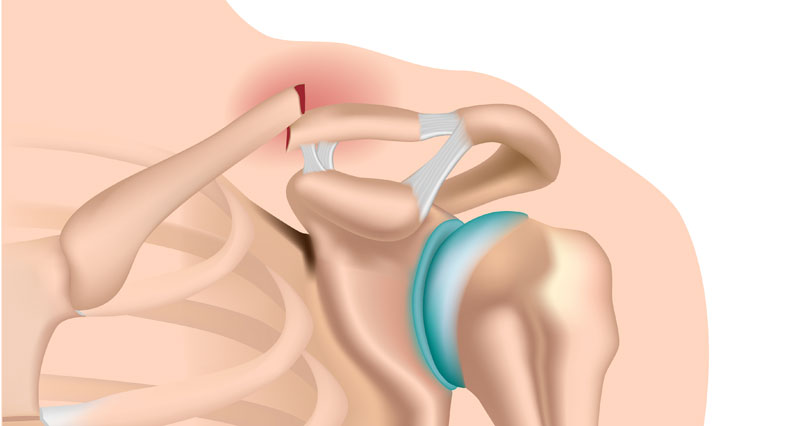A posterior shoulder dislocation occurs when the head of the humerus moves backwards out of the socket. This is a relatively rare injury as most shoulder dislocations are anterior. Car accidents, contact sports, or falling can cause a posteriorly dislocated shoulder.
Posterior shoulder dislocation symptoms
- Dislocated shoulder symptoms include sudden severe pain in the shoulder joint at the time of injury with rapid swelling.
- There will be a complete loss of shoulder function with constant pain and inability to use the arm.
- The shoulder will appear deformed. Often if you have a posterior shoulder dislocation you will want to hold your arm out sideways and rotate inwards.
- You may be able to feel the end of your humerus bone at the back of your shoulder.
Assessment & diagnosis
- An MRI or X-ray can identify associated fractures or soft tissue damage.
- Your doctor will check the pulse in your arm to identify possible injury to blood vessels. Assessing sensation levels in your arm may help identify any nerve damage.
Causes
There are two reasons a posterior shoulder dislocation occurs:
- A direct impact to the front humeral head, pushing it posteriorly or back.
- Or a fall onto an outstretched arm.
Both of these situations happen in sports, especially contact sports. They are also common traumas resulting from car accidents and epileptic seizures. During a seizure, the individual thrashes their arms violently. As a result, causing a posterior dislocation.
Treatment of a posterior shoulder dislocation
- Seek medical attention for a dislocated shoulder immediately. Do not try to move the shoulder or put it back yourself. Once at the hospital, a Doctor will examine your injury.
- Treatment depends on the extent of your dislocation and how recent your injury is.
- If you do not have any associated fractures and the level of dislocation is minor, your doctor usually reduces it themselves (pops back into place).
- They may use muscle relaxants, sedatives or anaesthetics to make reduction easier.
- The shoulder will then require rest to allow the soft tissues to heal, followed by a rehabilitation program to regain full movement and strength.
- You may need surgery to reduce your shoulder if you have lots of soft tissue damage, fractures, or injury to nerves and blood vessels. Following surgery, you will have a period of immobilization and rest, followed by a full rehabilitation program.
